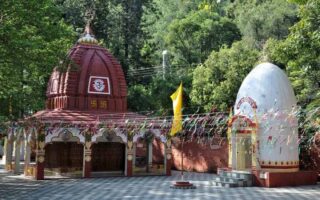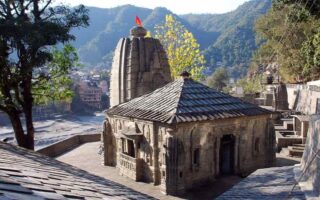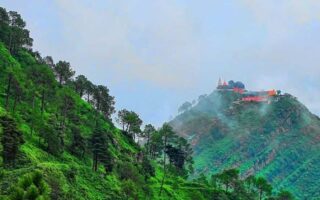Himachal Pradesh is a place of temples and shrines. It is said that every nook and corner of the state has a temple or some religious monastery. The exemplary faith of people in their deities and age old traditions is symbolized through these temples. Most of the temples in Himachal Pradesh are spectacular and have picturesque backdrops. They are the showcases of magnificent cultural heritage that has been carried over for centuries.
There are more than two thousand temples and worshipping places in the state. The beauty and marvelous architecture are enough to attract thousands of national and international tourists every year. Most of them are part of the age-old legends and literature. Called by the name of “Devbhoomi”, the entire states is dotted with such temples that play a significant role in the common man’s life.
Here is list of some popular Hindu temples in Himachal Pradesh that everyone should visit in their lifetime.
Narbadeshwar Temple
- Location: Hamirpur District, Himachal Pradesh
- Worshipped Deities: Lord Narbadeshwar (Shiva)
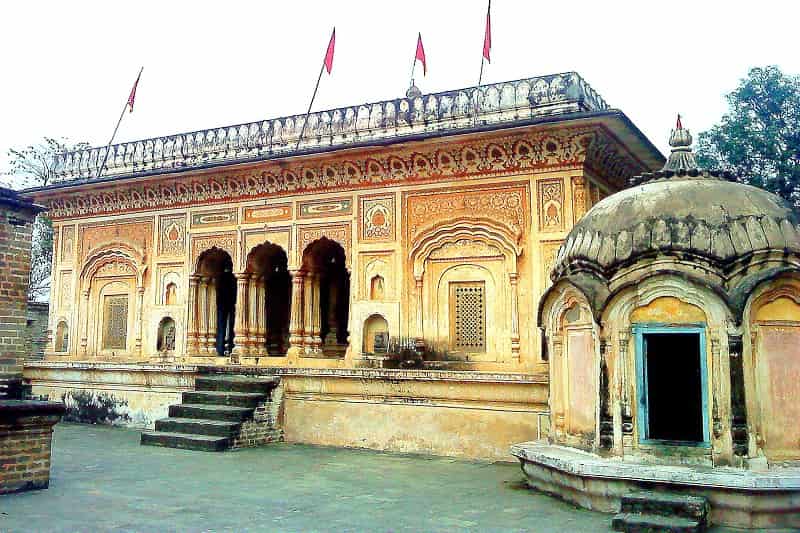
Narbadeshwar Temple was built by the wife of Sansar Chand, a ruler of the dynasty Katoch, in Hamirpur district of Himachal Pradesh. A revered piece of architecture, the temple is a major attraction for the tourists visiting Tira Sujanpur which is a picturesque town located on the banks of Beas River.
This age-old shrine is the worshipping place of Lord Shiva. The miniature paintings that adorn the interior are built in Kangra style which is most commonly called Pahari style. One can have the enchanting views of River Beas from the temple premises. There is only a single idol of the deity Shiva that is worshipped by the Hindu devotees.
Narbadeshwar Temple is a rare piece of architecture; it is being protected by ASI i.e. Archeological Survey of India. Efforts have been made by ASI to renovate and restore some of the paintings that form part of the temple art. This Shiva – Parvati temple is protected by a wall of about 8 feet. The murals have been painted all over the temple including its arches, hills, and niches.
In 1905, a destructive earthquake ravaged whole Kangra region, but Narbadeshwar Temple survived the fierce shock. Due to a recent residential activity in Sujanpur Tihra, the rare paintings of the temple are under continuous threat in order to prevent further encroachment; ASI is playing a pivotal role in preserving the monument.
Shirgul Temple
- Location: Sirmaur, Himachal Pradesh
- Worshipped Deities: Lord Shiva
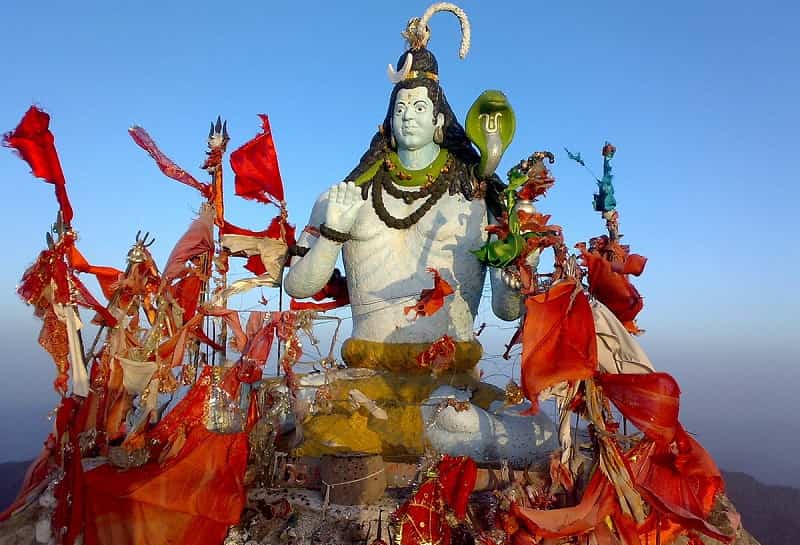
Shirgul Temple is located on the peak of Churdhar, in Sirmaur district of Himachal Pradesh. The temple is dedicated to Lord Shiva. The temple has a unique distinction of being among the oldest temples of Shirgul area.
This solitary structure is built in a square shape and has a single storey. The temple area is surrounded by grey brick walls from all the sides and are supported by huge columns. Shirgul Temple has a lofty height going as far as nine feet. The roof of the structure is gabled; the topmost beam is adorned with vessels of brass. The entrance of the temple is simple and carved with figurines.
There is only a single entrance to the temple. There is another dome-shaped temple that is present within the temple premises. This smaller temple is quite significant for the devotees as a colossal lingam of Lord Shiva is enshrined in it. The lingam has a height of six inches and is four inches wide. The phallus is placed inside a vessel along with water and ornamental items. The lingam is carved out of stone. The vessel is also made up of carved stone. Shirgul Temple is an architectural piece of antiquity.
Legend Associated with the Temple
As per the legend story, Shirgul was a great Shiva devotee and wanted to build a temple dedicated to his Lord. To do so, he made the young boys of the nearby areas suffer from a disease and declared that they can get rid of their illness if a Shiva temple is built at Chur Peak. His wish came out to be true when a temple was built at that place.
Shirgul Temple is visited by several devotees of Shiva and offer prayers to get his divine blessings.
Baijnath Temple
- Location: Kangra, Himachal Pradesh
- Built by: Ahuka and Manyuka
- Built in: 13th Century
- Timings: 6 AM to 9 PM.
- Entry Fee: No entry fee
- Visit Duration: 1-2 hours
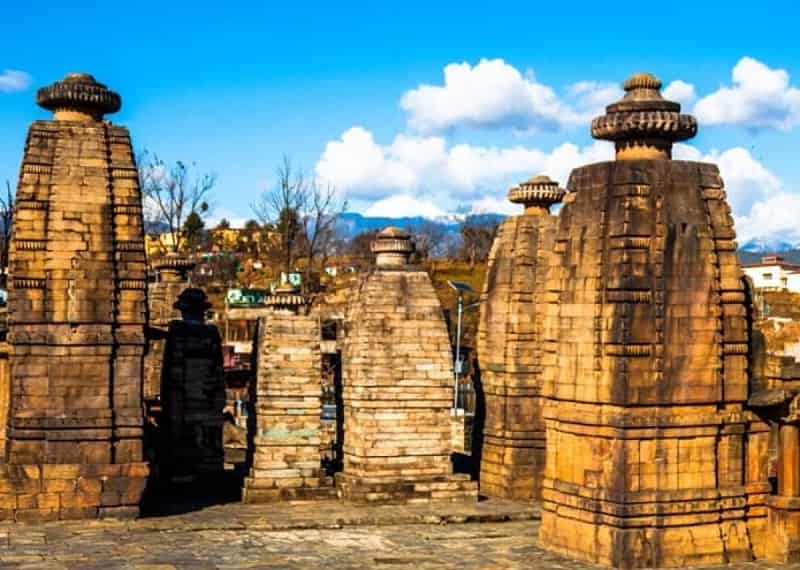
The Baijnath Temple a temple which is almost 1000 years old and is located in Baijnath town of Kangra in the Indian state of Himachal Pradesh. This is considered to be an ancient temple of the Hindu God, Lord Shiva. As per the legends people believe that during the Treta Yug, the demon Ravana wanted powers which would make him very strong, he worshipped Lord Shiva in the Kailash. Similarly for pleasing the almighty he even offered his ten heads in the havan Kund. Lord Shiva was very happy with this deed of Ravana and he not only got back the ten heads to Ravana but also blessed him with powers of impregnable and immortality.
The towns of Palampur Kangra and Joginder Nagar in in the Mandi district are the neighbouring towns. The festival of Dussehra is celebrated in the town of Baijnath. One more fascinating feature about this town of Baijnath is that one cannot find any shops of goldsmiths in this city.
Chintpurni Temple
- Location: Near Una, Himachal Pradesh
- Worshipped Deities: Chintpurni Goddess
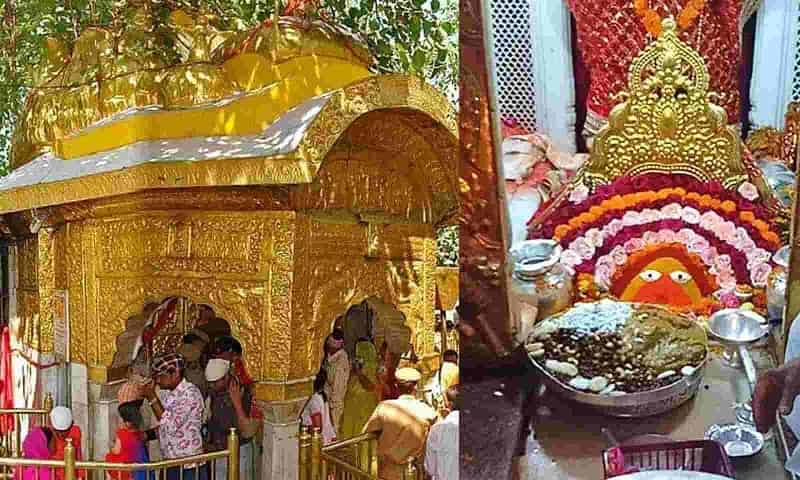
Chintpurni Temple is one of those Shakti Peeths that were formed when Lord Vishnu cut the corpse of Sati into 51 pieces. It is a highly revered temple of Hindus. Situated in Una district of Himachal Pradesh, the temple is built as a devotional place for worshipping the goddess Chintpurni Devi.
Attractions of the Temple
The temple houses a revered image of Hindu deity Durga which is built without a head. This is the reason why the temple is also known by the name of Chhinmastika Devi i.e. a deity without head. According to ancient myths, Sati’s legs had fallen at this place. Chintpurni Temple is a devotional temple for thousands of devotees who gather at the temple premises and offer prayers in order to take the blessings of god. At the time of Navrataras which take place in the months of October and April, the temple is crowded with zealous worshippers. Another Festival that is celebrated with much fanfare is the fair of Sawan Ashtami. The worshippers come to Chintpurni to seek the lotus feet of the deity.
The devotees usually offer coconuts, betel nuts, and a flag in red. These offerings are bound with a sacred thread called Mauli. Among other offerings that are made to the goddess include sweets, kheer, ghee, and flowers. At the end of the fair, Prasada in the form of “halwa” is distributed along with “chatter”. The chatter has 84 bells hanging from it. These represent 84 lacs different births through which a living being has to go through. The idol of the goddess is enshrined and presented in Pindi form (round stone). Worshipping is done to evoke her blessings; the Devi is considered to mitigate the worries of the disciples.
There is a garbhagriha that enshrines the Pindi of Durga. People come in large numbers to have a view of this Pindi. After all the ceremonies are complete, people get their photographs clicked in order to make the visit a life-time experience.
Chintpurni Temple is located amidst pleasing surroundings. There are several picturesque sites that are present in its vicinity.
Legend of the Temple
Like other temples, Chintpurni Temple is also linked with several myths and age-old legends. Bhagat Mai Dass was a staunch devotee of Durga. He never cared about worldly affairs. One day, as he was going to his in-laws house, he fell asleep in a jungle through which he was going. In his sleep, he saw a young girl who asked Mai Dass to worship her. Time went by and as Dass was returning from his father-in-law’s place, he had another encounter with that girl who was actually the goddess Durga. The deity ordered him to go to the place where her Pindi was kept and install it inside a temple. Dass followed her orders. The descendants of Bhagat Mai have carried on the tradition of worshipping this sacred deity.
This temple is considered a place where the knees of the deity had fallen when her body was cut into 51 pieces by Lord Vishnu.
Bijli Mahadev
- Location: Kullu, Himachal Pradesh
- Worshipped Deities: Lord Shiva
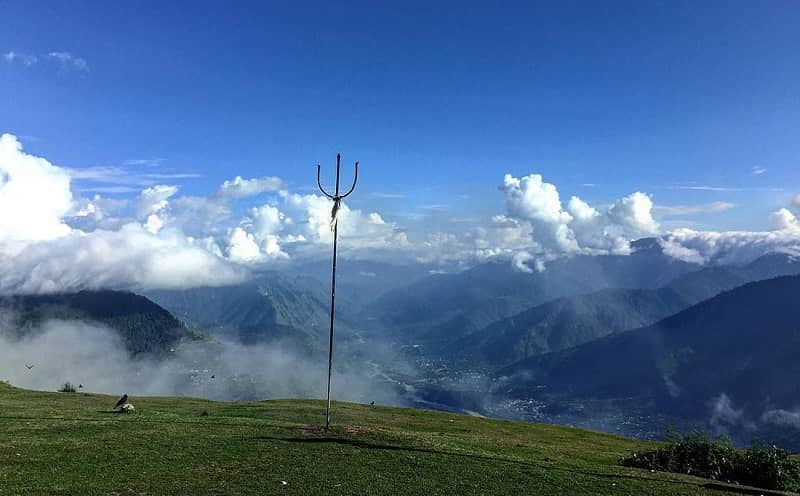
Situated near Beas River at a distance of about 40 kilometers from majestic town of Manali, lies the picturesque Kullu Valley. Gifted with scenic views and breathtaking landscapes, this valley is a home to an equally beautiful structure that goes by the name of Bijli Mahadev Temple. This spectacular temple is the worshipping place of Lord Shiva.
This spectacular temple is situated in Mathan and is flanked by a wonderful valley from all sides. A small village which shares its name with the temple is present on the foothills of the valley. As the temple is located at a high altitude of 2483 meters from the ground, accessing it is not an easy task.
Attractions at the Temple
Bijli Mahadev Temple is a splendid building; one of the most striking features of the temple is a sixty foot staff that lies at its top. The doors are ornated beautifully. A big door is made up with the wood of a cedar tree. The temple is made accessible by a series of steps.
A legend associated with the temple believed that every year a scary lightening takes place in the sky which leads to shattering of the Lingam into many pieces. This lingam of Shiva breaks down as the revered deity absorbs the energy emitted during this frightful occasion so as to protect the earth from destruction. As the Lord acts as a savior of mankind, this temple is known by the name Bijli Mahadev. In order to restore the lingam to its original shape and size, the priests at the temple heals it with sattu and butter. The walls of this sacred temple have charred sign that resulted from the fire that broke due to the lightning.
There is another legend which is mentioned in the Rig-Veda. According to a hymn of the Veda, Lord Rudra (Shiva) was requested by Rishi Vashishtha to inhale the excessive electricity. He agreed to do so at the confluence of Beas and Parvati rivers.
The sacred carriers or vehicles of Rudra i.e. Nandi bulls have been constructed facing the door. A deodar pole that rests inside the Bijli Mahadev Temple is supposed to receive the first shock of the lightning. This poll is replaced from time to time and planting a new deodar poll every time is supposed to please the Lord. This sacred task is performed by local villagers. Several statues are erected opposite to the temple premises where one can offer prayers and perform puja activities.
Bijli Mahadev Temple is one of the most attractive places that attract several Hindu pilgrims every year.
Bala Sundari Temple
- Location: Near Nahan, Himachal Pradesh
- Worshipped Deities: Goddess Katsana (Durga)
- Construction Period: 16th century
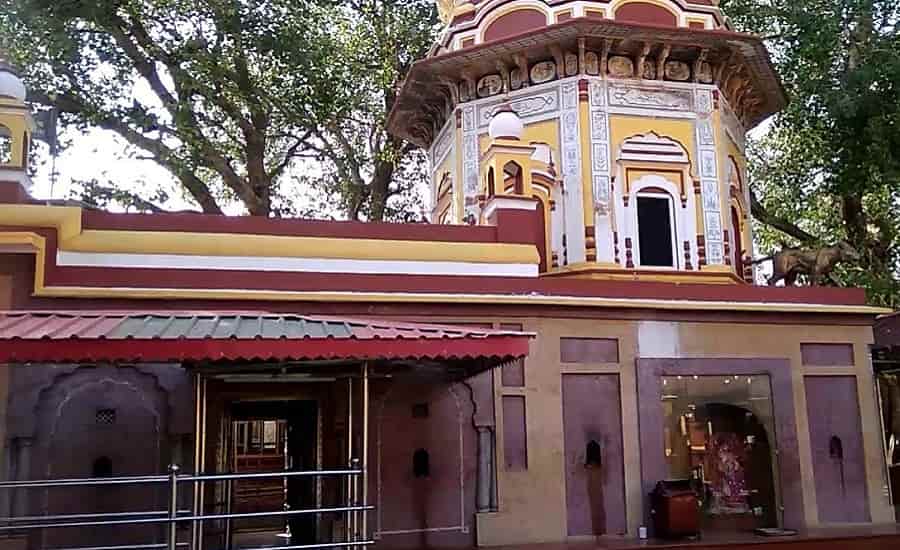
Bala Sundri Temple is situated at a distance of 17 kilometer from Nahan in the district of Sirmour. Built by Dip Prakash, this temple at Trilokpur is an important shrine of medieval India. The place is of immense religious significance and attracts thousands of pilgrims, especially from the states of Northern India.
The temple is situated near Dharamshala, another sacred place for Hindus. Every year, innumerable devotees visit Bala Sundri Temple and offer prayers to the goddess Mahamaya Sundari. The temple premises remain crowded especially during Navratri Festival. At this time, a special fair is organized for the sake of devotees who participate in the sacred ceremonies with full zeal and fervor. The fair is organized in the months of October and April when the entire ambience echoes the sacred enchants of Navratri songs.
There are other temples in the vicinity of the temple. A cave temple consisting of stalactites and stalagmites is present in Trilokpur. This Shiva temple is worth visiting by the pilgrims. Several ruins of places and other pieces of architecture are admirable. An audience hall belonging to the then Governor, Lehna Singh is also present near the temple premises.
Legend Associated with the Temple
Bala Sundri Temple was built to celebrate the historic surprising victory of Rajputs over Mughal enemies. In a battle that took place between armies of Ghulam Rahilla and Rajputana local chiefs, the result of the battle was turned upside down when the imminent defeat of Rajputs was converted into victory after the sudden and dramatic appearance of the goddess on the scene.
The temple is a worth-visiting site for the tourists who come on a vacation to Himachal Pradesh.
Behna Mahadev Temple
- Location: Behna, Himachal Pradesh
- Worshipped Deities: Lord Vishnu, Goddess Laxmi
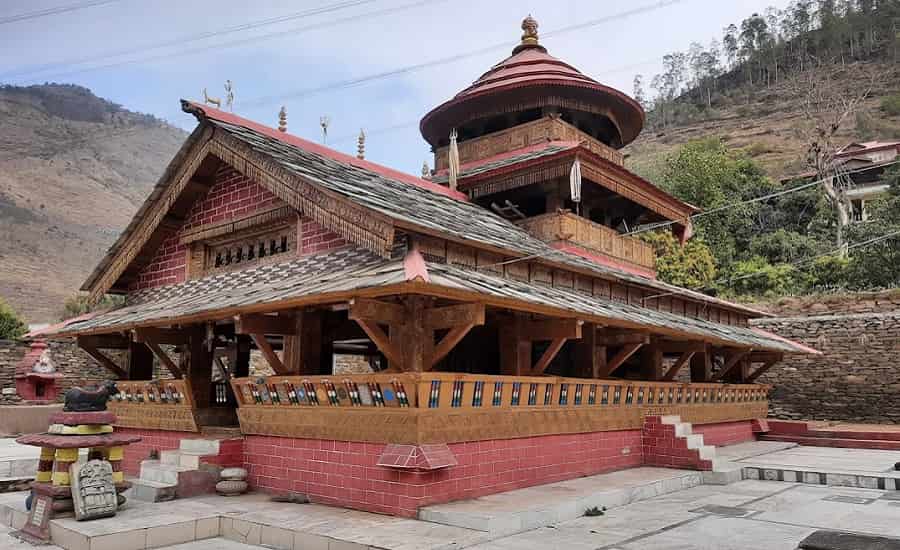
Behna Mahadev Temple is located in Satluj Valley of Himachal Pradesh. It is dedicated to famous Hindu deities viz Lord Vishnu and his consort Laxmi who are revered since ancient times. The temple is gabled shaped which means that the end of the building is adorned with a triangular-shaped structure. It is, in fact, one of the biggest temples in the whole of Satluj Valley.
The main attraction of Behna Mahadev Temple is a magnificent mask of Shiva that is made up of brass. This decorative piece belongs to either the twelfth or thirteenth century. The temple premises are adorned with the beautiful sculptures of Lord Vishnu and his consort Laxmi. There is a corridor that surrounds the temple and opens from all sides. For the sake of pilgrims, comfortable leaning seats have been placed at the corners.
There are two balconies that intersect each other. These balconies are excessively decorated with finials and conical roofs. The balconies have columns and beautiful carvings. The windows are embellished with animal friezes and floral designs. Behna Mahadev Temple is a true masterpiece that is a wonderful example of art and Architecture.
A large number of Hindu devotees visit this temple every year to pay their homage to their deities and offer prayers.
Bhootnath Temple
- Location: Mandi, Himachal Pradesh
- Worshipped Deities: Lord Shiva
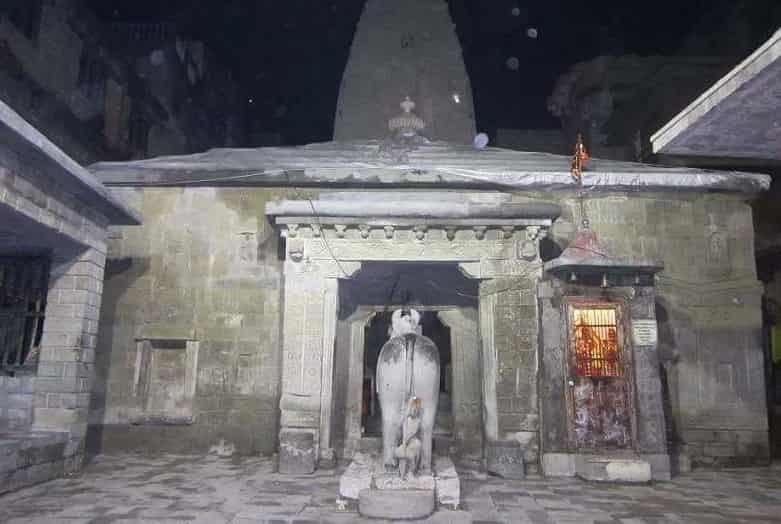
Bhootnath Temple is located in Mandi district of this North Indian state. This temple of medieval India is dedicated to a famous Hindu deity Lord Shiva. Built in exclusively Shikhara style which is similar to South Indian temple Architecture, the construction of the temple dates back to the 16th century.
Besides the adorable image of Lord Shiva, there is a beautiful image of his carrier of Nandi bull which is built facing the entrance of the temple. The building is embellished with double arches. The other pieces of architecture that are admirable include a mandap and cellars. There are exquisite pictures of animals like elephants that adore these cellars.
A festival that is celebrated with much fanfare in Bhootnath Temple is Shivratri in which sacred offerings are made to Lord Shiva. The famous lingam of this revered deity is bathed with milk, honey and scented flowers on this auspicious occasion.
The entrance is not very huge; its walls are adorned with various floral designs. The dome of the temple is quite high and resembles a Shikhara. The temple was built by Ajber Sen who himself was a staunch devotee of Shiva. The interiors of the temple are carved excessively. There are many pillars that support the structure. These columns lead to a small shrine in which the idols are placed.
Bajreshwari Temple
- Location: Kangra, Himachal Pradesh
- Worshipped Deities: Deity Sati
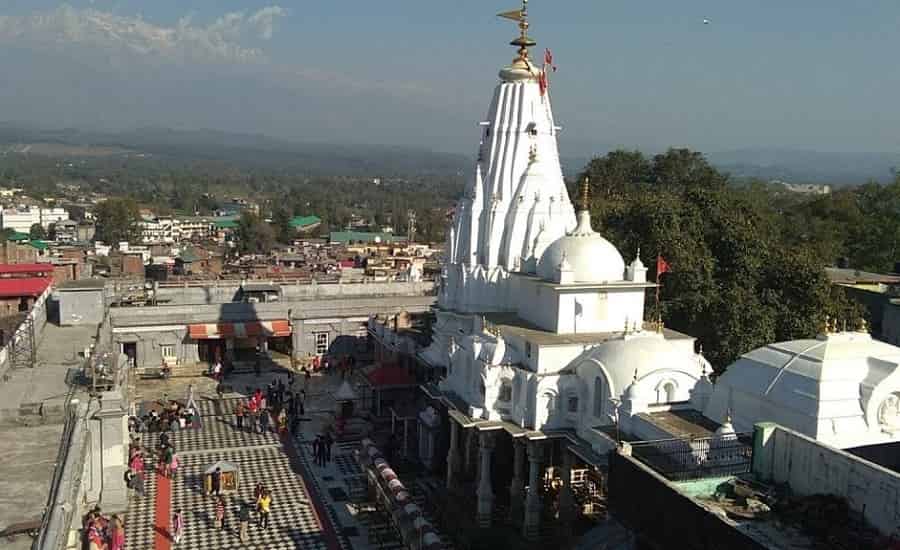
Better known as Vajreshwari Yogini Mandir, Bajreshwari Temple is located in Kangra district. It is one of the sati-Peeths where the breasts of the goddess fell in the incidence involving her father Daksha and husband Shiva. The temple was plundered many times in the past for the immense wealth that was present in its premises.
Attractions of the Temple
This temple of antiquity is believed to be at least one thousand years old. Dedicated to Vrajreshwari goddess, the temple is known for Shikhara style of Architecture which is inspired from a temple of South India. There are chhatris of wood that decorate the temple`s exterior. The dome or shikhara is adorned exquisitely. As the left breast of Sati is supposed to have fallen here, the devotees, on the occasion of Makar Sankranti, apply butter to her idol in order to heal her injuries.
In the words of Cunningham who was Kangra’s District Gazetteer, the Brajeshwari Temple is among the most famous worshipping places of Kangra. As one enters the temple’s interior, twin statues of fierce lions are present at the entrance. These lions are supposed to safeguard the enormous wealth present in the premises. The goddess Parvati or Bajreshwari is worshipped here in the form of a Pindi.
History of Plunders and Reconstruction
Mahmud of Ghazni ransacked Brajeshwari Temple in the 11th century. He looted the wealth and destroyed the temple. Instead, a mosque was erected at the place. Later, a local king ordered the repair of the temple and a replicate of the original idol was placed inside. He also filled the goddess shrine with gold, silver and other invaluable items. In the middle of the 14th century, Firoz Shah Tughlaq attacked the temple and looted the wealth. Emperor Akbar, during his rule, restored the old grandeur of place. In 1905, a massive earthquake destroyed the temple. Restoration Committee of Kangra took the pain-staking efforts to re-construct the temple. This divine place was also visited by Maharaja Ranjit Singh who covered the domes of the place with gold.
Legend associated with the Temple
A severe drought once plagued Kangra district that led to the death of innumerable People. In order to please Sati, the devotees performed a “havan”. The goddess guided the devotees to the place where her breasts had fallen and ordered them to build a temple there. Brajeshwari, Sati’s manifestation, is highly revered since then.
Brajeshwari Temple is a sacred place that is visited by numerous devotees every year. The temple is usually over crowded at the time of festivities like Navratra.
Champavati Temple
- Location: Chamba, Himachal Pradesh
- Worshipped Deities: Goddess Champavati
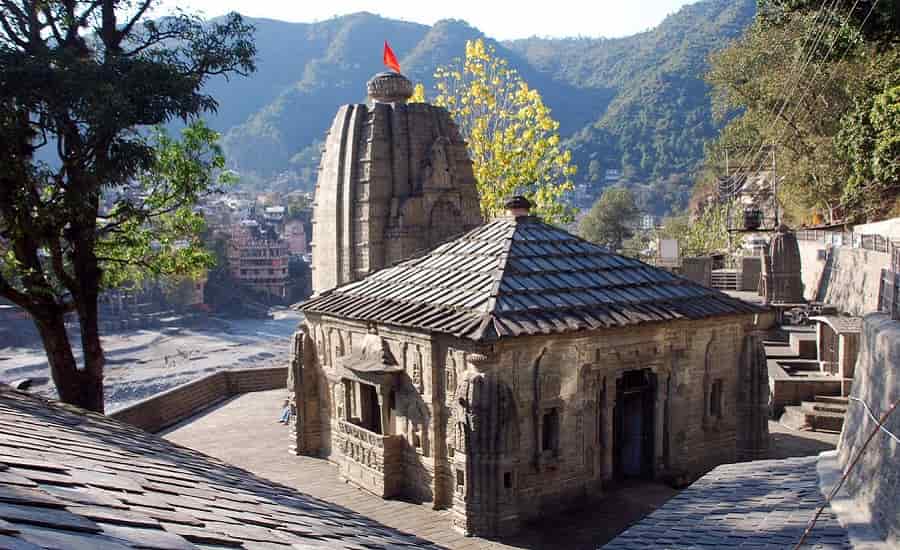
The legendary Champavati Temple is built in Nepalese style of Architecture and is devoted to the goddess Champavati. Constructed in the form of a cylinder and adorned with a bell-like dome at the top, this temple attracts the visitors by its unique architecture. The cylinder-shaped structure is subdivided into many parts.
Attractions of the Temple
The Shikhara style that is coupled with stone carvings make this temple a worth-visiting site. This huge piece of architecture was built by Sahil Varman who dedicated it to his daughter Champavati. The stone carvings that adore the interiors of the temple and the strikingly beautiful wheel-roof are adorable. The place is comparable with that of Laxmi Narayan Temple due to its immense size.
Legend associated with the Temple
There is a tale that lies behind the construction of this majestic piece of architecture. Champavati was the adorable daughter of the king Sahil Varman. She was extremely religious and spends most of her time visiting religious places and ashrams of Sadhus. But the king got suspicious and one day, in a fit of fury, followed her daughter. He also carried a dagger with him in order to kill her if his suspicion came out to be true. But as he reached the ashram, both Champavati and the Sadhu were missing. The king then heard a divine voice that rebuked him and called for the construction of a temple in name of her daughter, as a token of punishment. In order to save his family from the curse of Gods, the king constructed a temple dedicated to her daughter. The temple came to be known by the name Champavati Temple.
An idol of Mahishasura Mardini (goddess Durga) is also present in the temple premises. This Shikhara-style structure also has a shrine in the compound area. The visitors can also travel to the nearby Attractions like Sitaram Temple and Radhakrishna Temple.
Deotsidh Temple
- Location: Chakmoh, Himachal Pradesh
- Worshipped Deities: Baba Balaknath
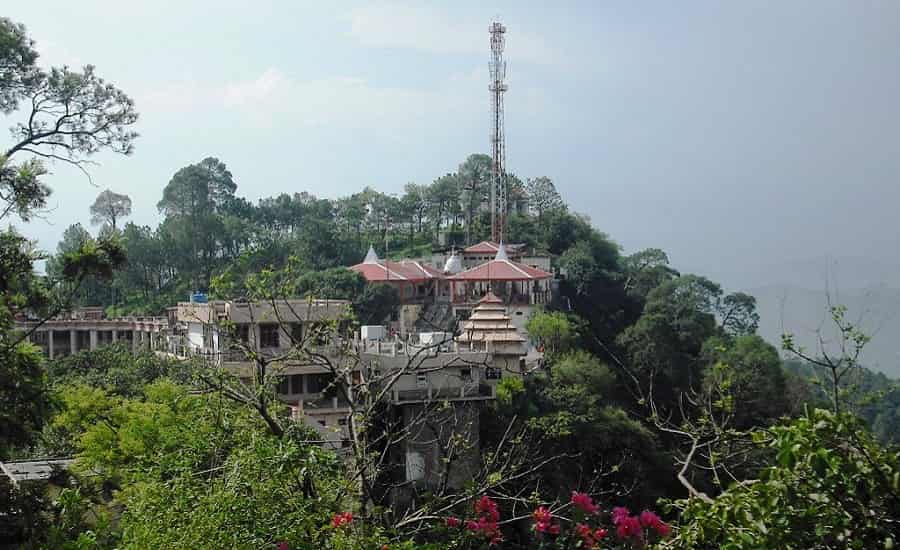
Deotsidh Temple which is also known by the name of Baba Balaknath is a medieval period temple of Himachal Pradesh. Located in the district of Hamirpur, the temple sits on the top of a hill. The panoramic view that can be seen from the top are enchanting. Considered a highly significant place for Hindus, it is located at a distance of about seventy kilometers from Bilaspur district.
Deotsidh Temple is a cave temple that is named after Balaknath who was believed to be born at this place many number of times in different periods. He was a great Shiva devotee and had miraculous powers. He was considered a savior of the poor and needy. The place is visited by myriad devotees who come here in order to take blessings of the deity.
Legend Associated with the Temple
Baba Balaknath was considered a great yogi or sidha who had amazing ascetic powers since childhood. He was born in the house of Guar Brahmans in Gujarat. During one of his wanderings, he reached a place called Talai. Here, as a child he impressed the villagers with his amazing talent and unique powers. A group of sadhus that tried to confront him faced a setback. After this incidence, he was seen as a meditating saint. Till now, he is believed to be alive and mediating on the top of the mountains.
Rites and Rituals
In order to pay homage to the deity, there are several rites and rituals that are observed at Deotsidh Temple. On the first Sundays of each month, a dish made up of baked flour is prepared and offered to the pilgrims. A sacred stone that has a carved foot of Babaji symbolize his divine presence. Such stones are worshipped by the devotees who keep them in courtyards. These pieces of stone are supposed to ward off evils.
Dakshin Mahadev Temple
- Location: Nirmand, Himachal Pradesh
- Worshipped Deities: Lord Shiva
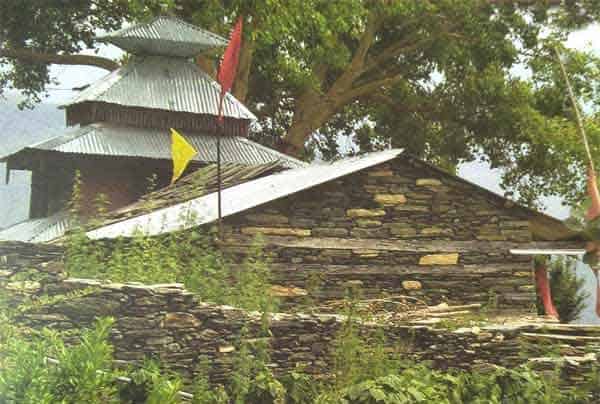
Dakshin Mahadeva Temple is a sacred place that is dedicated to Lord Shiva. The major attraction of the temple is a Shiva lingam that is enshrined in a cave. Phallus of the deity is highly revered by the devotees as it is considered to be the symbol of fertility.
The temple is a major Attraction for the tourists who come on a vacation to Kullu. Hindu devotees from all over India travel to this place and pay their homage to the revered deity.
Legend Associated with the Temple
Local people believe that in ancient time, a Brahman reared a goat that used to give large quantities of milk. One day, the goat disappeared behind the mountains that framed the Satluj River. The Brahman tried a lot but could not find any trace of the animal. Lord Shiva appeared in his dream and informed him about the whereabouts of the goat. As per the suggestion of the deity, he went to search for it in a cave. He not only found his goat, but also saw a Shiva lingam inside the cave. Considering it as a blessing of the almighty, he decided to live for the rest of his life within the cave along with his goat. Since then the cave to is known as Dakshini Mahadeva Temple.
Dakshin Mahadeva Temple attracts the tourists due to its unique features and believable legends that are linked with it.
Jakhu Temple
- Location: Shimla, Himachal Pradesh
- Worshipped Deities: Lord Hanuman
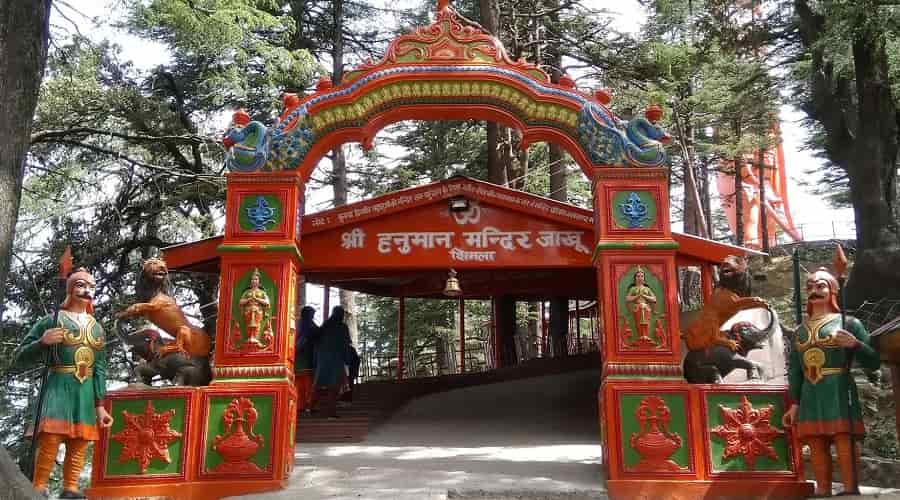
Jakhu temple, one of the famous temples of Shimla is situated at a short distance from The Ridge. It is, in fact, the highest point of this picturesque hill station. Standing at a whopping altitude of about 2400 meter, climbing it can be a delightful experience and an exciting venture for the tourists.
The temple is dedicated to a Hindu deity Lord Hanuman. Situated amidst thick forests, the temple adorns Jakhu Hill on which it rests. The word “Jakhu” stands for Yakshas who are the mediators between God and human beings and help in facilitating the communication between the two. The exact date of the construction of the temple is not known; yet according to local People, it dates back to the period of Ramayana.
Location of Jakhu temple is an attraction in itself. The breathtaking surroundings, snow-capped majestic hills, and splendid views are a complete delight to visitors. The way that leads one up to the top is adorned with lush green Deodar trees. The panoramic views of the entire town are visible from the top. Lovely sunsets and sunrises paint a breathtaking picture that is completely enchanting to eyes.
Legend Associated with the Temple
According to Ramayana, Hanuman was a great devotee of Lord Rama. During the fight between Rama and Ravana, Lakshman, the brother of Rama got seriously injured. In order to save his life, Rama sent Hanuman to Jakhu hill to fetch a particular herb so that his brother could be treated. As Hanuman reached the place, he got confused about which herb to take home. In a state of hurry, he took the entire mountain in his hand and flew back. On his way back, he rested at Jakhu hill which got flattened by his enormous weight. A temple was built at this place and came to be known as Jakhu temple.
The temple premises have Hanuman’s foot-prints and are highly revered by the devotees. The hills surrounding the temple area are home of several monkeys who can be seen here in large numbers. They are offered eatables by the visitors. The close affinity of Hanuman with monkeys earned him the name “Monkey Lord”.
The ride to the top is a strenuous task and it is not possible for some of the tourist to climb the entire distance on foot. For their convenience, pony rides are available. Jakhu temple is made with yellow, blue and red-colored bricks; the Architecture is quite simple and sober.
Koteshwar Temple
- Location: Shimla, Himachal Pradesh
- Worshipped Deities: Lord Shiva
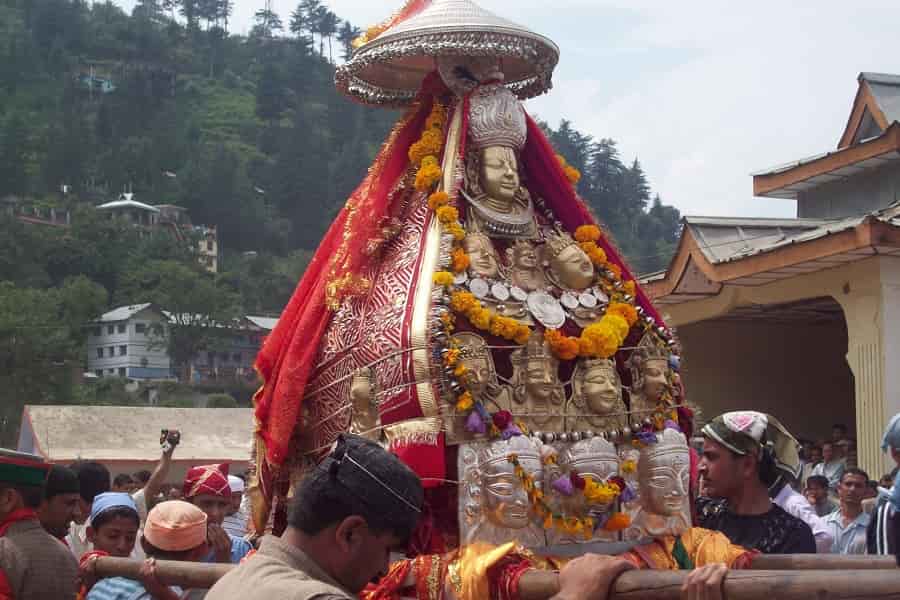
Koteshwar Temple of Himachal Pradesh is a brilliant piece of Architecture that is dedicated to Lord Shiva. Here the Lord is worshipped in the form of a lingam which is his phallus. Phallus is considered extremely sacred as it is supposed to be a symbol of fertility. According to mythological views, the whole world originated from it. This is the reason why it is highly revered in Hindu mythology.
Legend Associated with the Temple
Koteshwar Temple is linked with an age-old legend. According to a belief, Lord Shiva and Parvati, his consort had abode on River Pabar’s banks during ancient times. Due to some conflict in them, both of them got furious and changed their forms. This was the source of immense trouble for the local residents of that area. One day, a lad captured “yogins” of Shiva, enclosed them in a pot and went to throw the yogins in the river. But as he approached the river, he had an accident owing to which the pot fell and yogins got free. These yogins fled to the nearby hills of Kheksu and Tikkar. The local people greeted them. Twin temples were built in their honor. These temples were known by the names of Kshuimba Mata and Kacheri Mata.
The temple has a square base on which rests a conical shaped dome. The roof of the cone is made in stones. The temple is adorned with blue-colored columns from all sides. The temple belongs to a very ancient period but there is no lack in enthusiasm that can be seen in devotees visiting the temple. Koteshwar Temple is a holy place for Hindus and is a embodiment of the ardent faith that is enshrined in the heart of millions.
Laxmi Narayan Temple
- Location: Chamba, Himachal Pradesh
- Worshipped Deities: Lord Vishnu and many others
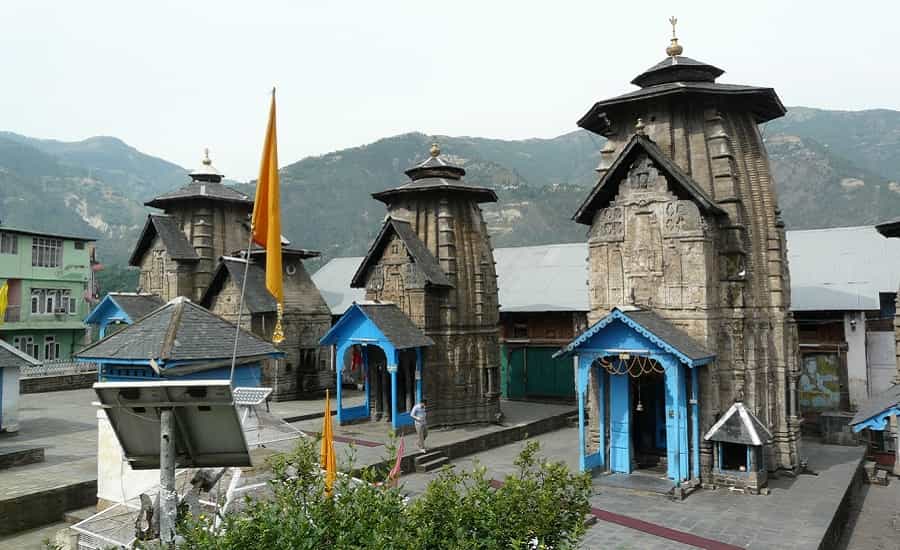
Located in picturesque Chamba, the temple is the largest one among all the temples that adore this valley. Built in tenth century AD, the temple was refurbished several times. Some of the rulers made adorable addition to the temple’s interior. Balbhadra Verma installed a metallic Garuda image at the entrance. Beautiful pinnacles resting on the top of the temple were the contributions of Chhatra Singh.
Architecture of the Temple
Built in white stone, Laxmi Narayan Temple is built in Shikhara style that resembles the Architecture of some of the South Indian Temples. There are, in total, six temples that stand majestically in a row and are built from north to south direction. Out of six, three temples are dedicated to Lord Vishnu; the other three are devoted to Lord Shiva. The temple that is situated in the northernmost direction is called Laxmi Narayan and is one of the most prestigious among all the temples that adorn the Chamba valley.
Besides Shikhara, there is also a Garbhagriha that houses the idols of the deities. No one, except priests, can enter it. This innermost shrine does not have any opening or window and is mostly dim-lighted. Built in square shape, Garbhagriha is located at the point where maximum harmony and equilibrium of the temple can be found. The other structures present inside the temple include Mandap, shell roofs and Chhatris made in wood.
Legend Related to the Temple
The legend is related to the sons of the king Sahil Varman who sent them with a marble slab in order to construct the image of Lord Vishnu. Upon finding that the image cannot be constructed using the given material as it contained a frog, the sons constructed idols of other gods like three-faced sculpture of Lord Shiva and Ganesha. As the princes were returning back, they were killed by a group of rogues. After hearing the news, the eldest son, Yugkara, was sent by the king. Yugkara defeated the robbers with the help of a saint. He returned with the slab; later Vishnu’s image was constructed with it and became a part of Laxmi Narayan Temple.
The other deities that are worshipped at the temple are goddess Parvati (in the form of Durga), Rangnath, goddess Lakshmi, and Baba Bangali. Every year, the temple echoes with the sounds of joyous enchanting that can be heard during the festivals of Janmashtami and Shivratri. The temple remains open for public from 6.00 in the morning to 12.30 at noon. It again opens at 2.30 and finally closes at 8.30 at night.
Manikaran Gurudwara
- Region: Himachal Pradesh, near Kullu Manali
- Popular As: Sikh and Hindu pilgrimages
- Altitude: 1,737
- Dedicated To: Guru Nanak Ji and Temple of Ramchandra
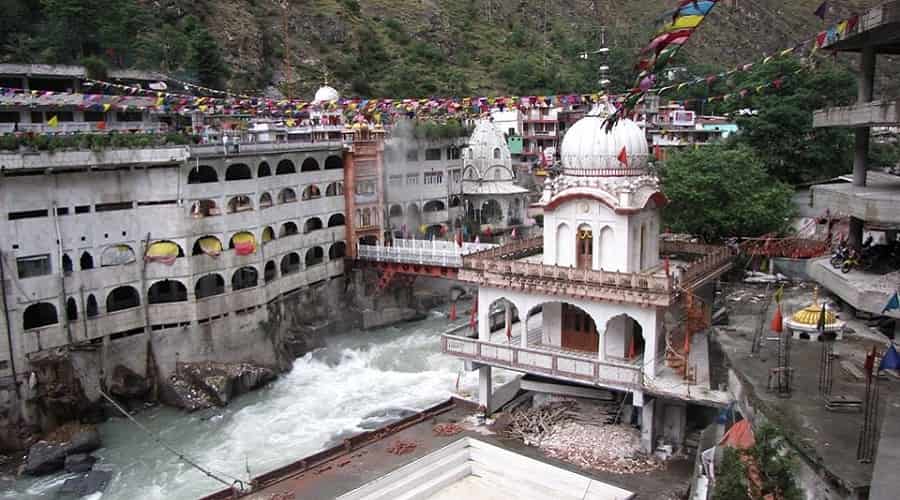
Manikaran Gurudwara is situated under the high snowy mountains and near the Parvati valley. The hot spring of this place is very impressive because of its mystic properties. The water of this hot spring is hot enough that; it can be used to boil rice. Along with the Sikhs, Hindus also have a spiritual respect for this pilgrimage. This is not only a religious place but also a nice spot for trout fishing. At the center of this structure, there is temple of God Ramchandra temple. You will get to see a very nice surrounding around the temple. This place offers you excellent sight scene.
You can enjoy one dip in the hot water spring and get refreshed. There is not only one spring but there are 3 bath spring, 1 bath spring is constructed under the Manikaran and the rest 2 are private and they are available inside the guesthouse. More than 11,000 years God stayed in this place. There is a History that, in the beautiful water God took rest with Mother Goddesses, that time they found a Mani it was a earring of Mother Goddesses, which she lost somewhere in Manikaran.
Mother Parvati was searching it from many days but she was not getting her jewel. Lord Shankar gave instruction to the attendants, to find the jewel but they also failed. Lord Shankar got angry and he opened his third eye, it was a very unfortunate event; and the whole universe was destroyed.
Attractive Spots of Manikaran
Lord Shiva Temple
In the campus of Manikaran, there is an old temple of Lord Shiva; which has got the title in the year 1905 during the earthquake.
Temple of Sri Ramchandra
There are many temples within the village of Manikaran. Ramchandra temple is a very important temple. The priest or Pandas of the village declared that Lord Rama’s idol was brought all the way from Ayodhya and he installed it in the temple by the hands of Kullu’s Raja.
Masrur Temples
- Region: Kangra’s southern side, fifteen kilometers
- Special Architecture Structure: Monolithic temples about fifteen
- Dedicated To: Eight hundred meter
- Popular For: Hindu pilgrimage
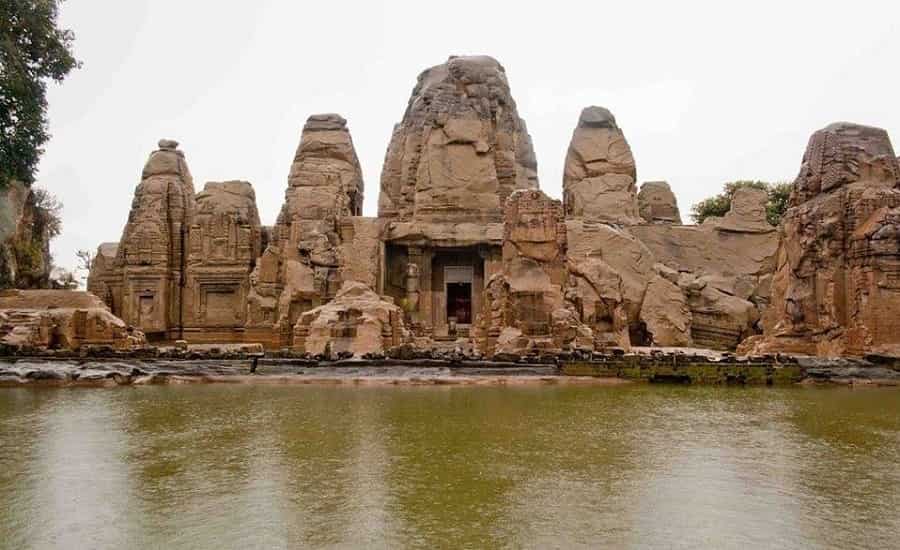
Splendid Masrur pilgrimage is one more spiritual and ancient structure which is located within Masrur. From Kangra’s southern part it is about fifteen kilometers. Masrur’s altitude location is around eight hundred meters. Himachal Pradesh state’s religious site is totally sacred due to the presence of fifteen Shikhara temples, these temples are cuts of solid rock, all these temples have been constructed during the tenth century.
The construction pattern of temples is Indo Aryan monolith; if you have seen the temple of Ajanta Ellora, then you will immediately find similarity with those temples. These temples have been damaged a bit but still they are magnificent and beautiful. The temple’s idols have been damaged very badly. Particularity the idol of Lakshmana, Lord Rama and Sita Goddess are attractive and eye pleasant. This pilgrimage is adorned through well managed fake lake and carved lawn flank.
You won’t find so wealthy and beautifully carved temples in the entire northern regions of India, only here you can experience these golden and artistic creations. In Shimla’s museum, you will get a chance to experience the very delightfully carved panels and real Shikharas, these artifacts are only present in this museum. The prime shrine influences the center. The restricted surrounded area has secured these valuable artifacts from the attack of Mahmud Ghazni and they also have rock construction to prevent it from natural calamities such as 1905’s earthquake.
Let’s Hangout
From various nearby places you can easily reach Masrur. There are a number of other interesting places, which are hid in the surrounding area of Masrur. If you go forty eight kilometers away from Kangra, you will arrive at Nadaun. Here you will actually feel nature through beautiful greenery, clean sky and flowing cool air. This is an ideal place to communicate with peace. When King Ranjit Singh attacked the Kangra region, he decided to shift his capital place to this beautiful location, where the beauty of nature is overflowing.
On Beas River’s left bank, the king had constructed a palace, after some time that palace became a major point to represent Kangra’s art, culture and business. The land of Nadaun also includes Lord Shiva’s temple, in this temple the King used to meditate. This beautiful and pleasant place is best to spend your weekend holiday. Here you can also experience lots of fun through fishing in Beas River.
How to Reach
The closest railway station of Masrur is Kangra. Pathankot is the closest broad railway station which is connected to various prime towns.
The closest airport of this pilgrimage site is Gaggal, you can reach here in very less time because it is only twelve kilometers away from Kangra.
This is a well developed village of Himachal Pradesh state, where you can even reach through road.
Narayan Temple
- Location: Udaipur, Near Chamba, Himachal Pradesh
- Worshipped Deities: Lord Narayana
Located at a distance of about five kilometers from Chamba Valley, Narayan Temple is a devotional temple dedicated to the deity Narayana. Besides main image of Narayana, there are two other statues that are present in the temple’s interior. These statutes belong to the brothers Uday Singh and Laxman Singh. The temple stands at the place where these brothers were killed.
Major Attraction of the temple is a sati pillar. This pillar has carved images of all the four queens of Uday Singh and several maid-servants who committed “sati” i.e. self – immolation by burning in the pyre of the husband.
Narayan Temple is a place worth-visiting by the tourists coming to Chamba Valley. In order to reach here, one can take buses from the nearby cities. Direct trains are available from Delhi, Kolkata, Mumbai, and Amritsar that reach Pathankot, the nearest railhead. One can also reach by Gaggal Airport that is present at a distance of 180 kilometer from Chamba.
Renuka Temple
- Region : Himachal Pradesh, close to Nahan
- Special Features : Renuka Lake and the Math
- Altitude Location : Six hundred seventy two kilometers
- Major Attractive Locations : Fair of Renuka that held in November month
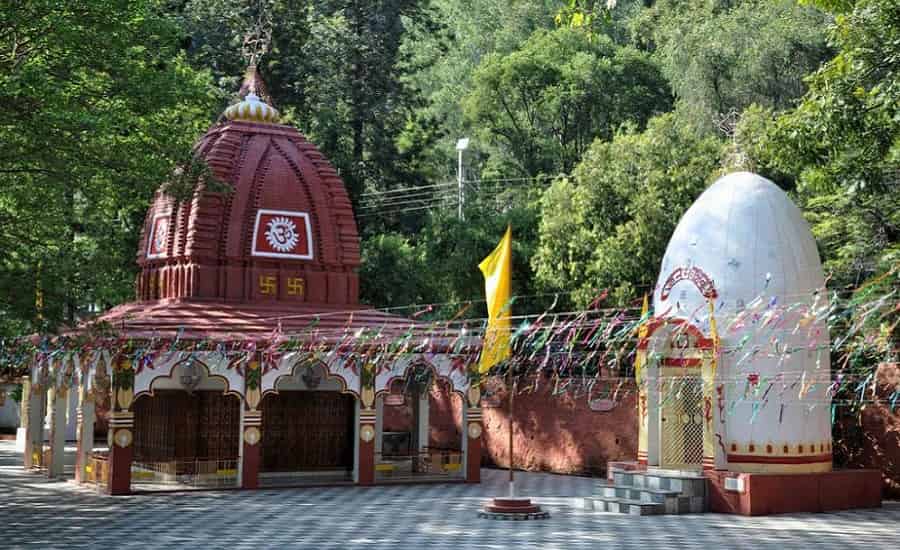
This pious Renuka temple is located below the of Renuka Lake, where the strong pool of Parashuram Tal exemplify. There is a belief that Renuka’s son wanted to expend his perpetuity on the feet of this mother. If you want to see the huge celebration and faith of people towards Renuka temple then try to visit Renuka pilgrimage during November, at that time the Renuka fair was held. In this fair both son and mother reunites on the Renuka Lake’s banks. As per Hindu Mythology, the actual Renuka Temple was constructed overnight through conditional of Gurkhas, during the oldest nineteen century.
Shiva Temple Kangra
- Location: Kathgarh, Himachal Pradesh
- Worshipped Deities: Lord Shiva and his consort Parvati
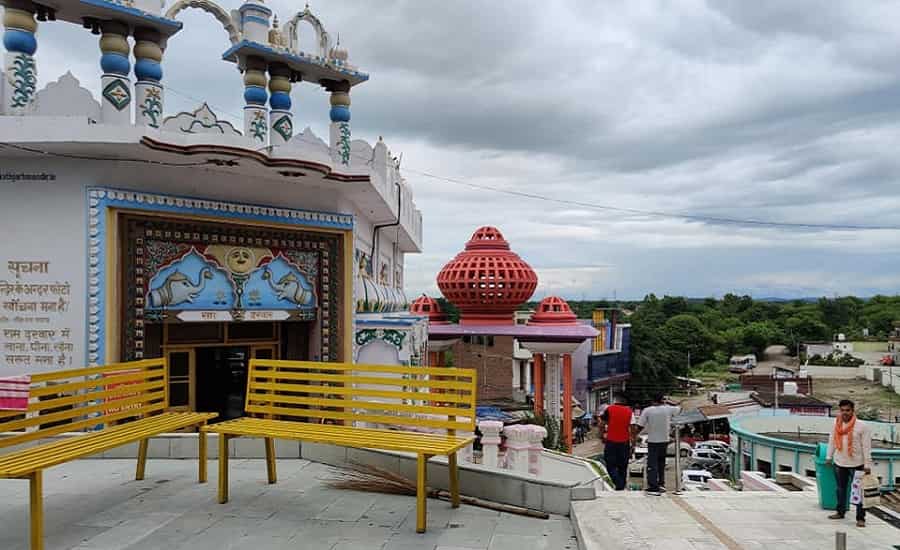
Shiva Temple at Kangra is located at the confluence of the Rivers Choch and Beas. This ancient temple, though lesser known in Kangra, is a brilliant piece of architecture. Considered an abode of Lord Shiva, the temple is known for a “lingam” or phallus which is about the height of a human-being.
The length of the lingam is six feet and its width is about 5 feet. The phallus is intersected into two parts made by cutting it vertically. These two parts symbolize Lord Shiva and his consort Parvati. The relative distance between these parts keeps on changing from time to time. It is difficult to find such an exclusive piece of architecture anywhere else in the world.
As with other sacred Hindu temples, there are several legends associated with the Shiva Temple. According to the folk-lore, once Lord Vishnu and Brahama had a fight over their supremacy. At that time, Lord Shiva assumed the form of a fire pillar and tried pacifying their fights by restoring dharma. After that, the pillar of fire is considered so sacred that it led to the establishment of the temple.
According to another story, the pillar of fire is supposed to establish order. Yet another legend says that it is the place where Bharata, younger brother of Lord Rama, used to offer his prayers while traveling to Kashmir. There are many celebrations that take place at the temple premises and signify the enshrined faith of Hindus in their lords. The Festival of Shivratri is celebrated with full zest and devotion. It is said that at the festive occasion of Nag Panchami, the gaping between two pieces of lingam decreases and increases at Shivratri.
Shiva Temple can be accessed from Indora which is located near Pathankot. The temple lies at about six kilometers from Indora. Another way to access the premises is through a highway that connects Pathankot and Jalandhar.
Siddhanath Temple
- Location : Baijnath, Himachal Pradesh
- Worshipped Deities : Lord Shiva
Siddhanath Temple is located at Baijnath in Kangra district. This temple resembles in its Architecture to that of Mahadev temple. The exteriors and interior of both the temples are strikingly similar.
The most important feature of Siddhanath Temple comprises of the beautiful elephant frescoes. These frescoes have a height of about 15 meters. The figures of these animals are carved on a stone slab. In addition to these, magnificent carvings on roof and other portions are splendid. The beauty of these carvings lies in their intricacy and extreme detailing.
Legend Associated with the Temple
There is a legend that is linked with the Siddhanath Temple. People believe that this sacred temple of Shiva along with another Shaivite temple called Baijnath is the work of twin brothers Baijnath and Siddhanath. Hence the temples have been named after them. These brothers were commonly called Siddhu and Baiju. The temples are situated in a village called Kiragrama.
Usha Devi Temple
- Location : Nichar, Himachal Pradesh
- Worshipped Deities : Deity Usha
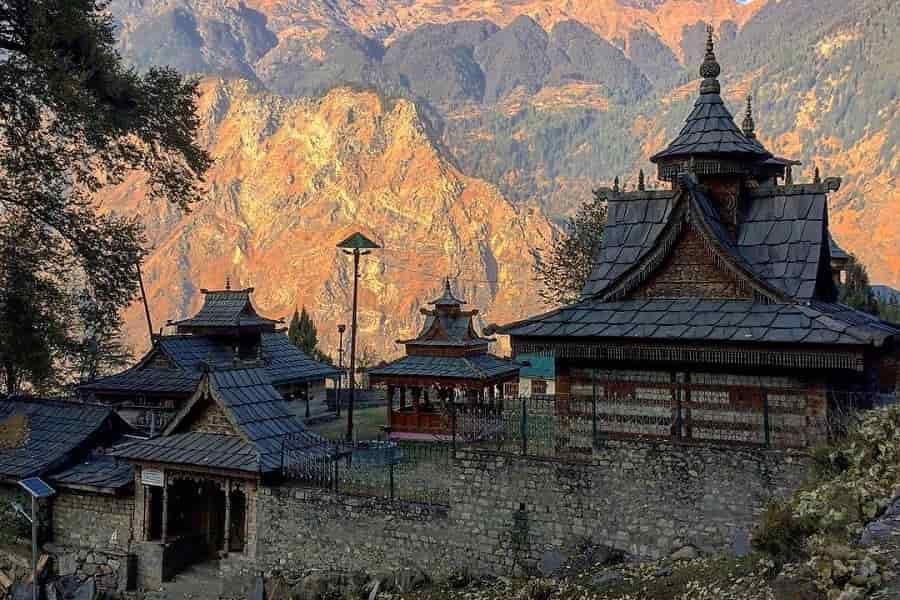
Usha Devi temple or Ukha Temple, as it is commonly called, is located at a distance of about 200 km from Shimla. Nichar, where the temple is actually situated is a place of bountiful beauty and abundant wild animals. Dedicated to Ukha or Usha Devi, the temple is quite significant for the local inhabitants. The temple is the pride of Kinnaur district.
The villagers residing in the nearby areas consider Usha Devi Temple to be the place of veneration. The worshippers flock to this place in order to give offerings to the goddess. The main Attraction of the temple are the plates made of bell metal that are sometimes used for eating purpose, especially when huge crowd gathers at the temple premises. The plates have been placed inside a room and no devotee is allowed to enter it. Only “Bhandari” has the limited access to the room. As he comes here to collect the plates, he is not expected to look around.
The entrance of the Usha Devi Temple is colossal one and has a wooden door. The door is embellished with the images of several deities.
Legends Related to the Temple
The word “Usha” stands for dawn. According to the legend, Ahan, a yogi, worshipped Brahma for millions of years in order to get his blessings and attain rare spiritualistic powers like creating objects out of sand. Jealous by increasing powers, Indra became apprehensive about the loss of his throne ad send Usha, a beautiful damsel to dissuade Ahan from his meditation. Ahan created the sun so that Usha disappeared every time he created sun. But Indra was determined in his purpose and kept sending her to the saint. Soon, Rishi got disturbed and eventually married Usha.
Another story says that the demon inside Ahan came to prominence when he was subjected to continuous disturbance by the stunningly beautiful Usha. One day, he could no longer suppress his indignation and beheaded himself in a fit of rage. As he committed suicide, his ” Tapasya ” or meditation came to an end. A temple called Usha Devi Temple was erected in praise of Usha.
